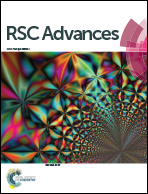Preparation and in vitro release of buccal tablets of naringenin-loaded MPEG-PCL nanoparticles
Abstract
Naringenin-loaded monomethoxy poly(ethylene glycol)-poly (ε-caprolactone) (MPEG-PCL) nanoparticles (NARNP) and their formulation into buccal tablets using mucoadhesive polymers were developed to improve the solubility of naringenin and to treat oral inflammatory and ulcerative diseases. In our work, physicochemical characterizations of NARNP including particle size, zeta potential, transmission electron microscopy (TEM), differential scanning calorimetery, Fourier transform infrared spectroscopy and in vitro release were studied. NARNP buccal tablets and control buccal tablets containing MPEG-PCL copolymers and mannitol respectively were prepared and they were evaluated by weight variation, hardness, friability and in vitro release. NARNP had a small size (<100 nm), good encapsulation efficiency (95.26 ± 1.15%), and high drug loading (9.95 ± 0.15%). The lyophilized powder of NARNP showed good stability and re-solubility. For the in vitro release study of buccal tablets, Drug dissolution rate was investigated by the USP I method. To simulate in vivo conditions of the oral cavity, a new dissolution test apparatus was designed for assessment of drug release. Compared to control groups, buccal tablets containing NARNP showed more rapid and complete drug release (more than 80%) over 12 h using two dissolution test apparatuses. NARNP incorporated into buccal tablets effectively improved the release of naringenin. With desirable drug release and release time (12 h), NARNP buccal tablets may be an efficient vehicle for treatment of oral inflammatory and ulcerative diseases.


 Please wait while we load your content...
Please wait while we load your content...